Abstract
The elongation rate of cowpea epicotyls from whole cowpea (Vigna sinensis) seedlings and derooted and debladed plants (explants) increased after the main light period (8-hour duration) was extended with either continuous low intensity tungsten light or brief (5 minutes) far-red (FR) irradiation. This end-of-day FR effect was reversed by red (R) irradiation suggesting the involvement of phytochrome. These results confirm and extend those obtained previously with other species. Localization studies indicate the epicotyl to be the site of the photoreceptor. Treatment of cowpea seedlings with paclobutrazol, a gibberellin (GA) biosynthetic inhibitor, abolished the FR promoted epicotyl elongation, indicating a role for GAs in this process. There was no significant difference in epicotyl elongation rates of R plus FR irradiated explants treated with GA1 or GA20 and R irradiated explants treated with GA1. However, R irradiation inhibited subsequent epicotyl elongation of GA20 treated explants. Moreover, the observation, using GC-MS, that GA1 and GA20 are native GAs in cowpea lends support to the concept that phytochrome may control the conversion of endogenous GA20 to GA1 in cowpea.
Full text
PDF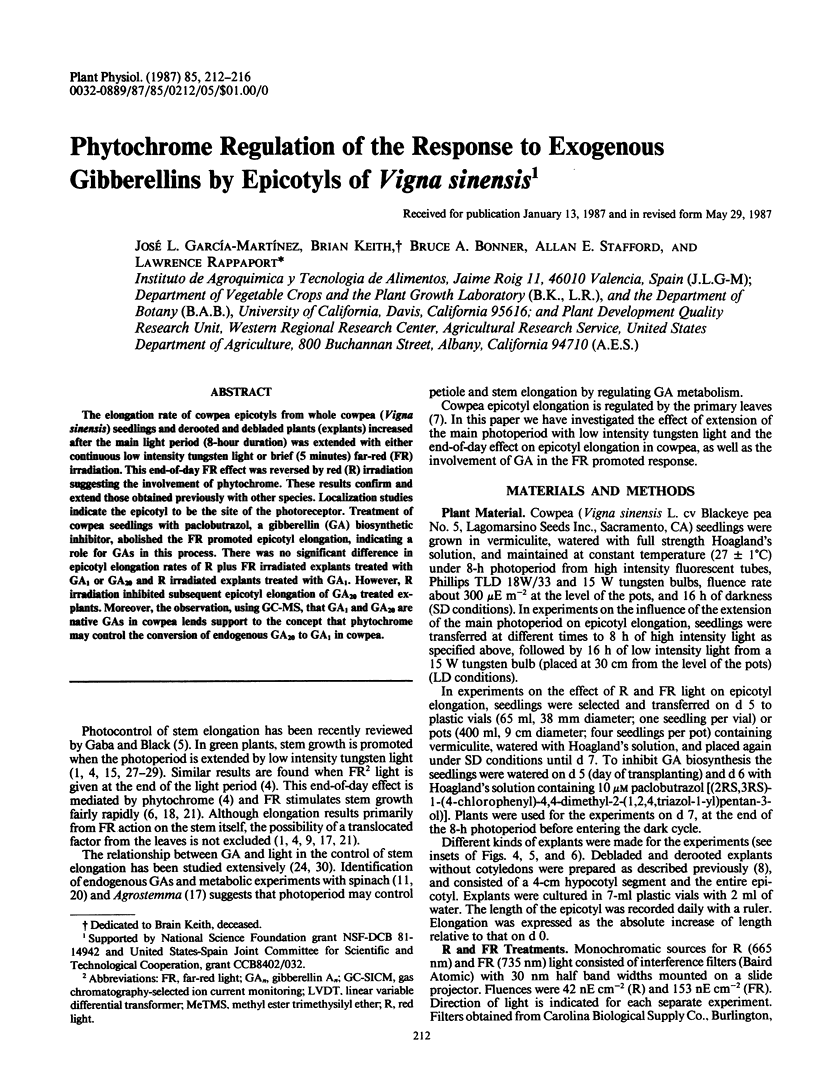
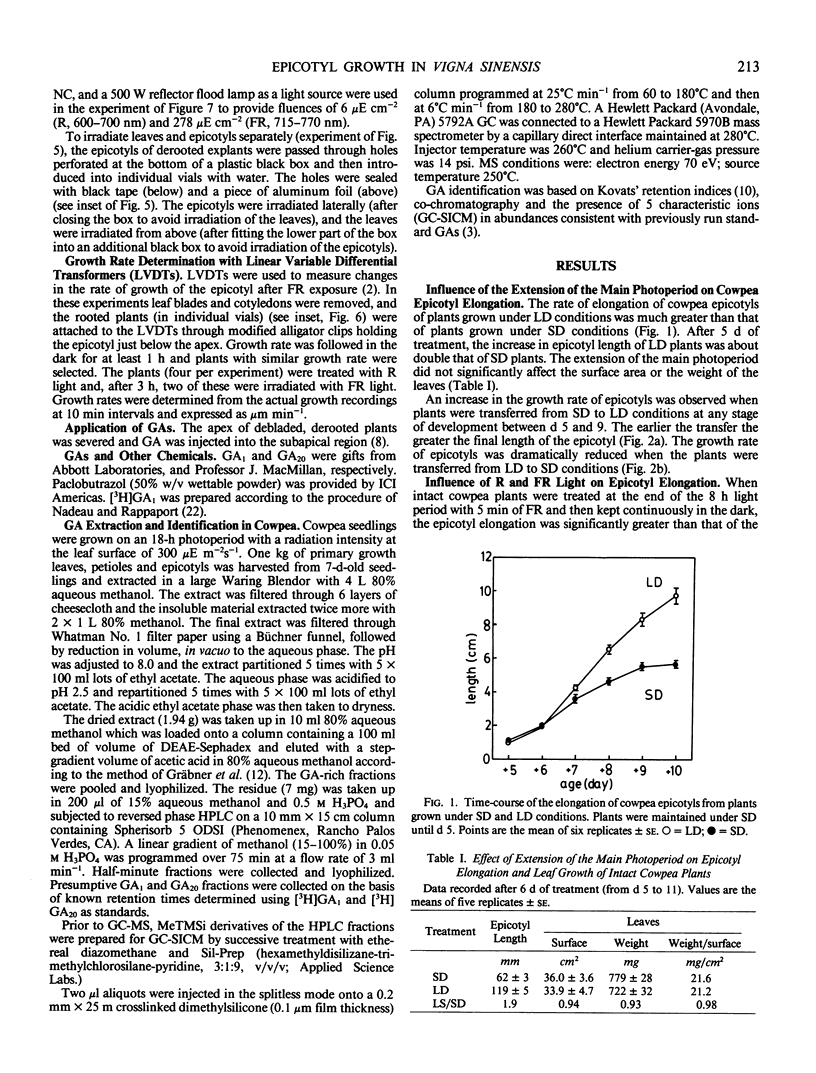
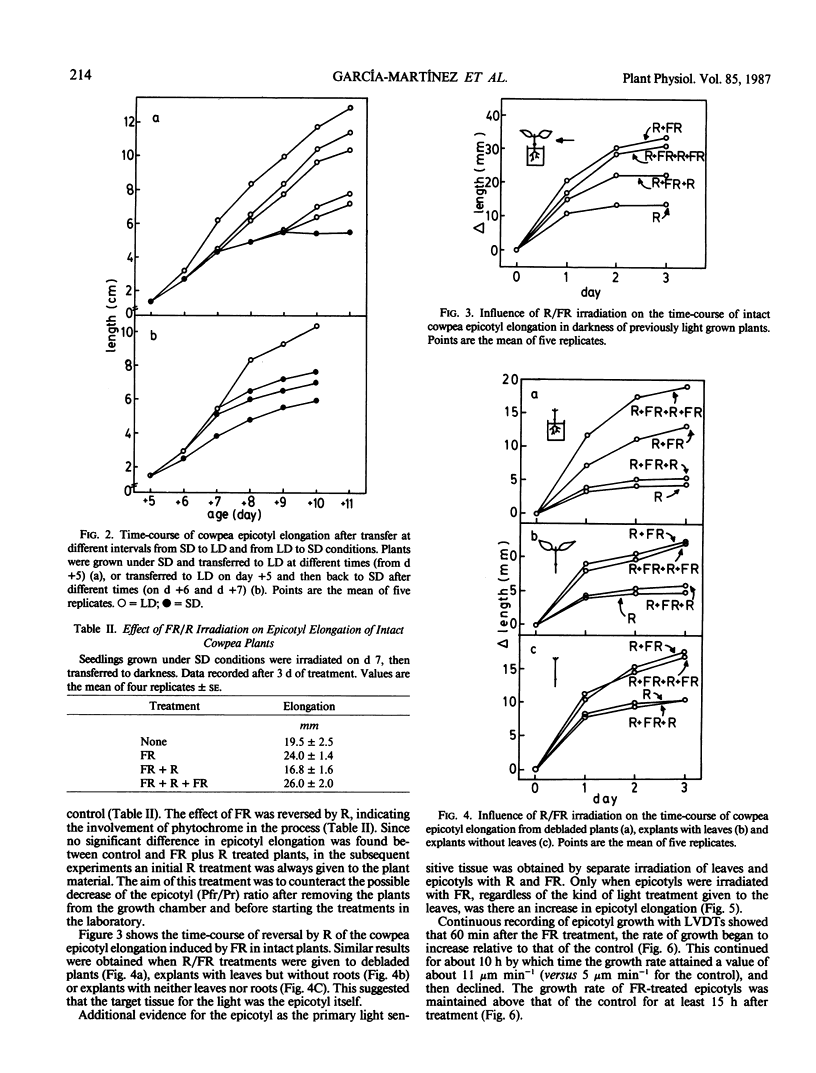
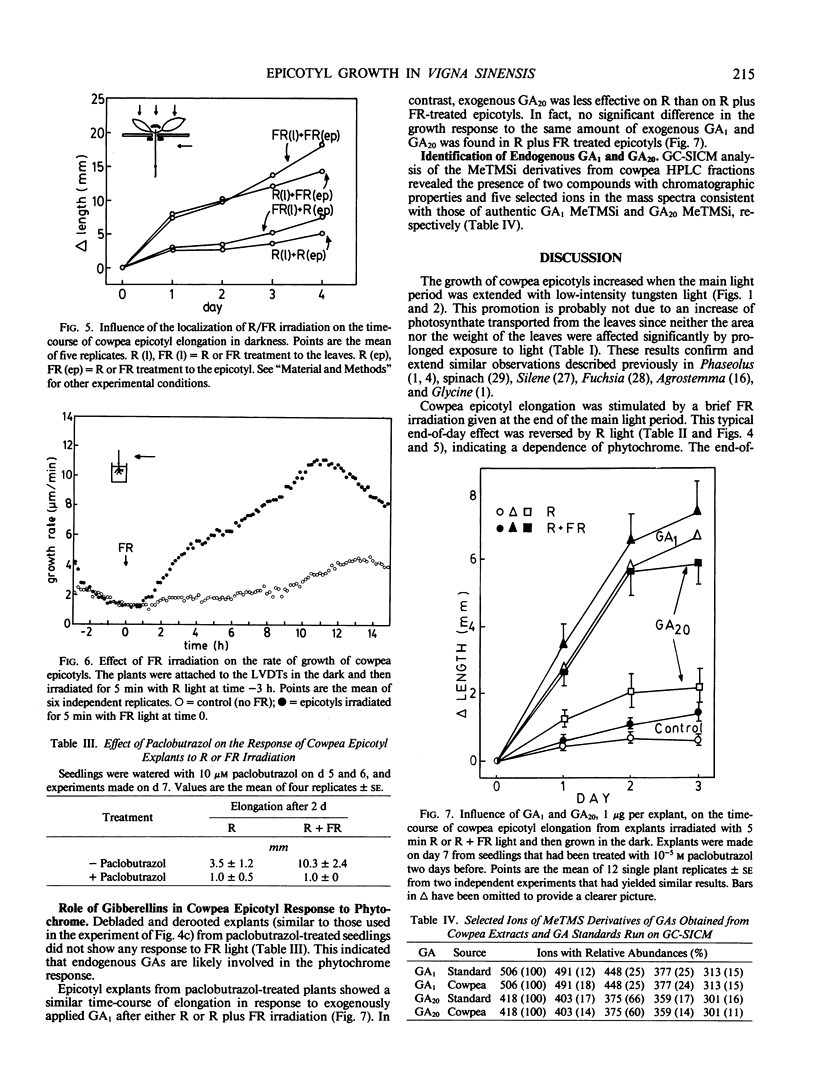
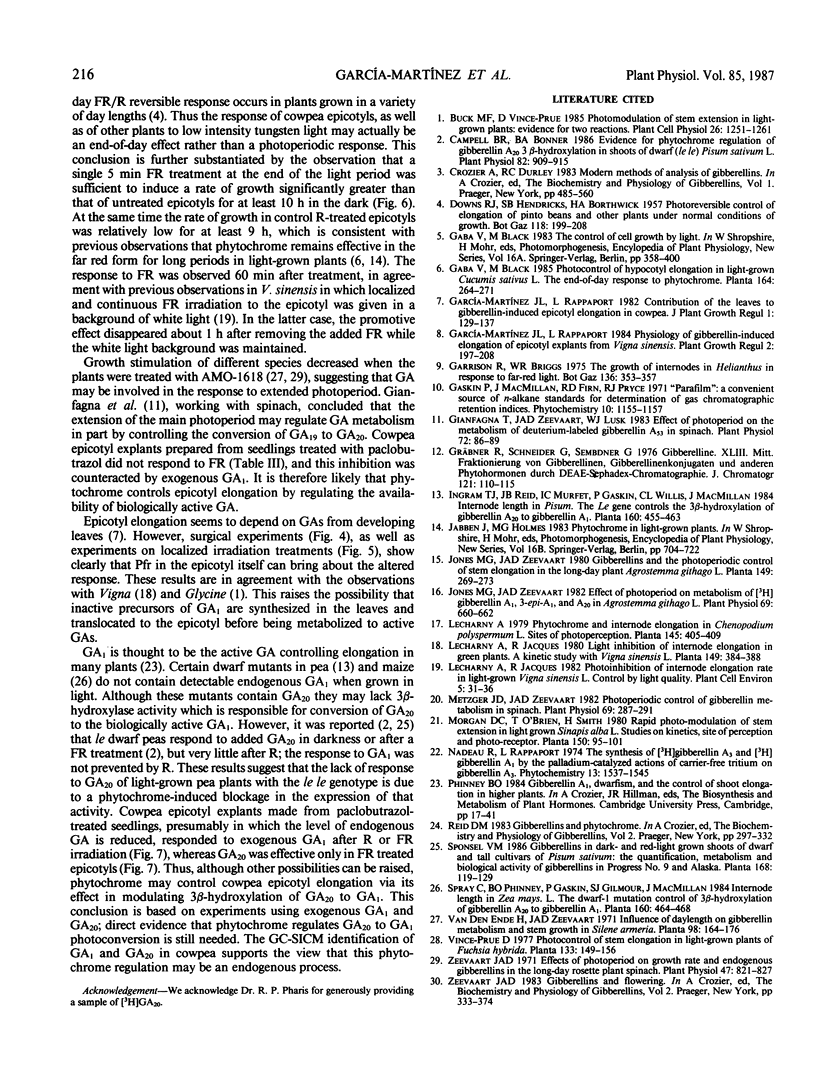
Selected References
These references are in PubMed. This may not be the complete list of references from this article.
- Campell B. R., Bonner B. A. Evidence for Phytochrome Regulation of Gibberellin A(20) 3beta-Hydroxylation in Shoots of Dwarf (lele) Pisum sativum L. Plant Physiol. 1986 Dec;82(4):909–915. doi: 10.1104/pp.82.4.909. [DOI] [PMC free article] [PubMed] [Google Scholar]
- Gianfagna T., Zeevaart J. A., Lusk W. J. Effect of photoperiod on the metabolism of deuterium-labeled gibberellin a(53) in spinach. Plant Physiol. 1983 May;72(1):86–89. doi: 10.1104/pp.72.1.86. [DOI] [PMC free article] [PubMed] [Google Scholar]
- Gräbner R., Schneider G., Sembdner G. Gibberelline. XLIII. Mitt. Fraktionierung von Gibberellinen, Gibberellinkonjugaten und anderen Phytohormonen durch DEAE-Sephadex-Chromatographie. J Chromatogr. 1976 Jun 9;121(1):110–115. doi: 10.1016/s0021-9673(00)82310-9. [DOI] [PubMed] [Google Scholar]
- Jones M. G., Zeevaart J. A. Effect of Photoperiod on Metabolism of [H] Gibberellins A(1), 3-epi-A(1), and A(20) in Agrostemma githago L. Plant Physiol. 1982 Mar;69(3):660–662. doi: 10.1104/pp.69.3.660. [DOI] [PMC free article] [PubMed] [Google Scholar]
- Metzger J. D., Zeevaart J. A. Photoperiodic control of gibberellin metabolism in spinach. Plant Physiol. 1982 Feb;69(2):287–291. doi: 10.1104/pp.69.2.287. [DOI] [PMC free article] [PubMed] [Google Scholar]
- Zeevaart J. A. Effects of photoperiod on growth rate and endogenous gibberellins in the long-day rosette plant spinach. Plant Physiol. 1971 Jun;47(6):821–827. doi: 10.1104/pp.47.6.821. [DOI] [PMC free article] [PubMed] [Google Scholar]


